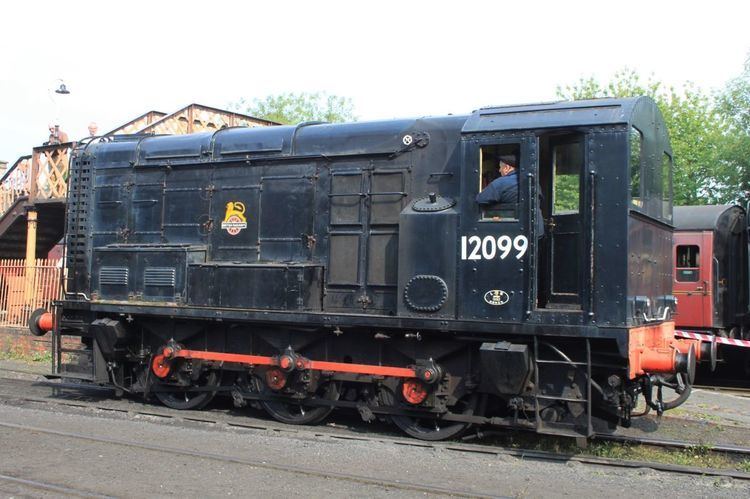Power type Diesel-electric Total produced 120 UIC class C | Build date 1945–1952 | |
 | ||
Builder LMS/BR Derby & BR Darlington | ||
The British Rail Class 11 was applied to a batch of diesel shunting locomotives built from April 1945 to December 1952, based on a similar earlier batch built by the London, Midland and Scottish Railway (LMS) between 1934 and 1936.
Contents
Numbering
An initial batch of twenty locomotives was built during World War II, fourteen of which were built for the War Department, with the first ten of these (70260-70269) subsequently going to the Nederlandse Spoorwegen post-war as NS 501–510. LMS numbers 7120–7126 went straight into LMS stock, and a follow-up batch was built, 7129 being the last diesel shunter to be built for the LMS. British Railways continued to build the class from 1948 to 1952, using numbers M7130–M7131 and 12045–12138. 7120–7129 and M7130–M7131 became BR numbers 12033–12044. The whole class of 12033–12138 became Class 11. Locomotives up to 12102 were built at LMS/BR Derby and 12103–12138 at BR Darlington.
Export locomotives
Close to 100 almost identical machines were built by English Electric and supplied to Nederlandse Spoorwegen (NS) as their 500 Class & 600 Class diesel locomotives. In addition to the exported 501-510 mentioned above, 500 Class also included 511-545. Sixty-five of the 600 Class locomotives were built by English Electric between 1950 and 1957, numbered 601–665, at either Dick, Kerr & Co. Works (601–610) in Preston or Vulcan Foundry Works (remainder) in Newton-le-Willows. A further batch of 15 locomotives were exported without engines so that they could be fitted as such in the Netherlands. These were numbered 701-715.
Another export order was to Australia, with 16 locomotives built in 1951 but with the design modified for use on 5 ft 3 in gauge railways. The Victorian Railways bought ten, which were designated as F class, and six were bought by the State Electricity Commission of Victoria for shunting on sidings connected to Victorian Railways tracks.
Technical details
The diesel engine is an English Electric 6-cylinder, 10-inch bore by 12-inch stroke (254 mm by 305 mm); 4-stroke, 6KT and the traction motors are two: EE506 axle-hung, nose-suspended, force-ventilated traction motors with 21.7:1 double reduction gear drive. The main generator is an English Electric EE801, 441 A at 430 V.
Withdrawal
The 106 locomotives of British Railways were withdrawn between May 1967 and November 1972
Post-BR use
Sixteen locomotives were sold to the National Coal Board, and were used in the North East, South Wales and the Kent Coalfield.
The following locomotives were at Harry Needle Railroad Company (HNRC):
Preservation
The following Class 11 diesel shunters are preserved:
